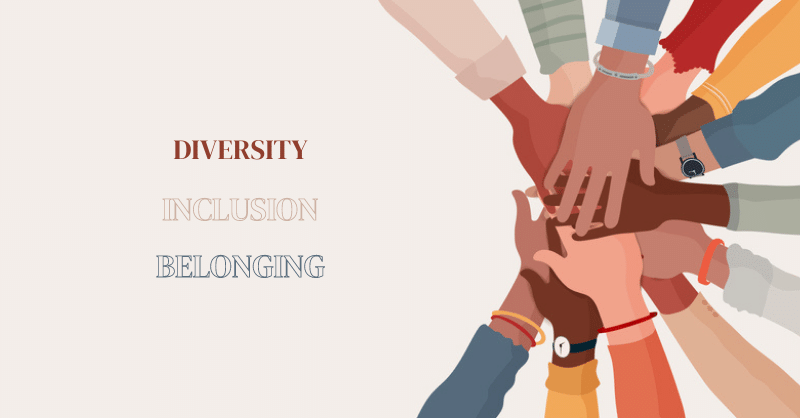
Every business is exposed to conflict. As a matter of fact, almost 85% of employees report that they have experienced some type of conflict in the workplace. Business owners, managers, and employees have an interest in these issues being resolved. A conflict-free workplace environment is beneficial to all and will ultimately be reflected in the success or failure of the business. That’s why we’ll be looking at three main types of conflict in the workplace.
Loss of productivity and low morale are usual companions to workplace conflicts, and they can carry huge financial costs. Not only does team cohesion get destroyed when conflict is present, but lawsuits can also start to crop up. And this can lead to further problems for the business. Before things reach this stage, it is important to become familiar with the main three types of conflict in the workplace. This will help implement strategies to reduce them or prevent them altogether. Read on to find out more about them.
1. Personality Conflicts at Workplace
It is to be expected that everyone has a different personality. And bringing people together at work will not necessarily mean that everyone working there will have similar ones. However, reconciling personality conflicts at work is not easy to do. Personalities bring different work styles and value systems. So, colleagues with different perspectives need to find a way to mesh these different personality styles.

Admit Your Part
Before losing patience, there are some actions that employees can take to avoid reaching a conflict stage. To start, they must examine and admit their part in the conflict. Acknowledging that they are also part of the situation that has developed means that the employee’s responses and feelings will have to be addressed. And this will establish an open dialogue with the employee with whom conflict had arisen.
Develop Compassion
Employees need to be able to develop compassion and the ability to place themselves in the other person’s shoes. For example, an employee might find it easier to accept the flaws in a co-worker when they recognise that they also have issues with which they struggle.
Focus on the Positive
When an employee finds a co-worker irritating or tends to clash with them, it is important to learn to focus on the positive. Admitting that although some noticeable quirks or attitudes bother them, there are also positive points they’re contributing to the workplace. By focusing on their strengths, they may be able to set aside their differences.
Learn to Listen Closely
Sometimes, conflicts arise simply because people don’t take the time to truly listen. By listening to what a co-worker is saying, they can ask them to explain themselves before reacting. So, learn to listen to what they say instead of jumping to assumptions about their intentions.
Reach Out, But Set Boundaries
It is easier to communicate with someone impersonally through emails or messages when someone is annoying. However, taking the time to speak face-to-face can send a positive message and prevent possible conflicts. If the efforts to make peace are unsuccessful, limiting interactions with that person to business essentials is acceptable.
2. Leadership Conflicts at Workplace
It is not only employees who are responsible for conflicts at work. Managers can also create tension in the workplace, thus making everyone uncomfortable. To avoid creating conflict, managers should practise good communication. For example, anger and resentment may appear if employees feel that their questions or concerns are not taken seriously. Also, it can happen if management does not take the time to answer them.

Establish Communication Channels
It is important to establish open communication channels while setting some guidelines. For example, let’s say employees complain about waiting too long for an email response. If that is the case, set guidelines indicating that emails must be answered within 30 minutes after they are received. For instance, you have read the content and will respond more fully shortly. If managers still have problems replying to emails promptly, you may consider moving them to a different role. Maybe in a role where communicating through emails is not required.
Address Conflicting Ideas Regarding Business Direction
Suppose there are several managers. And they each have a different idea as to what direction the business should be focused on. Naturally, clashes and conflicts will arise. The disagreements may be over issues as dissimilar as the look of the new logo. Or the strategies to be followed when targeting the desired audience. Or how much the business should invest in the cost of merchandise, and many others.
When this happens, it is urgent to set up management meetings to discuss in what direction the company is going. But, of course, the boss needs to sit in at these meetings. And if no consensus is possible, the boss’ ideas may have to prevail, and management must adhere to them.
Prevent Micromanagement
Managers often have trust issues with their employees. They may think, employees aren’t capable of carrying out their assigned tasks. As a result, they may complete some of their employees’ work. Or constantly ask them what they are working on and whether they will reach their target on time. This attitude demoralises employees and is a seed for conflict and dissatisfaction.
Managers should be reminded that it is not up to them to oversee every minute detail of their employee’s work. But they are to serve as guidance and support for them. Still, employees may continue complaining about their manager’s involvement in their jobs. As a result, the manager may have to be assigned to a different position.
3. Cultural Differences at Workplace
Diversity is the front and centre in today’s society, including the workplace. Hence, another type of conflict in the workplace is due to cultural differences.
Often, employees can set these cultural differences aside. And they can concentrate on the tasks that need to be carried out at work. They can find common ground and hang on to this instead of focusing on the differences.
Often, the main source of conflict is cultural differences. But also, it can be due to a lack of communication, empathy, and understanding.

Establishing Cultural Competency
Employees may be unable to interact with people from different backgrounds and cultures. Management should implement strategies to make them more culturally competent. This means being tolerant of people who –
Having culturally competent employees has become very important in today’s work environment. It can mean the difference between the success and the failure of the entire organisation. Sadly, cultural competence is not something that an employee can become good at simply by passing a test. Instead, employees should be encouraged to examine their own feelings and thoughts. They must admit to themselves where their shortfalls lie and what areas need to be strengthened.
To achieve cultural competence, employees should be made aware of these points:
Their Reactions to Those Who are Different
We often see someone with different skin colour, accent, or place of origin. An employee should not immediately react by thinking they are probably illegally in this country. Instead, they should be aware of their gut reactions. And strive to create a more accepting reaction and position.
Their Cultural Biases
Employees should be aware of their own biases regarding other cultures. And try to avoid all-encompassing statements. Such as the belief that those who practice one religion are bad. And those who practice another set of beliefs are good. These widespread feelings will interfere with the way an employee can relate to their co-workers.
They must initiate change when it comes to acquiring cultural competency. Employees should start by identifying their values, beliefs, prejudices, biases, and habits. These certainly make up a big part of who the employee is. Positive interaction with people from other cultures can start when the employee can identify their cultural baggage and leave it aside while at work.
Their Communication Skills
Employees should work on their communication skills when reaching out to people from different backgrounds or cultures. This includes verbal and non-verbal communication. And also, accepting that these will vary from culture to culture. By facing these differences, many possible conflicts can be avoided. Eventually, it’ll be easier to work together with people not from the same cultural group.
Final Words for Conflict Types in the Workplace
There are varying types of conflict in the workplace. So, managers should learn to be tolerant and accepting of different cultures. Because it’s up to them to set an example to employees as to how to interact with people who are different. When differences are acknowledged, it is the first step towards acceptance. This can lead to a more comfortable work environment in which aggressive behaviour and conflicts can be put aside.
If you own or manage a business, PPS recommends that you become familiar with the types of conflict your enterprise usually experiences and implement policies to address them. When things are clear, employees know what to expect and how to react. Thus, conflict types in the workplace will be reduced to a minimum.
Read More!


12 Easy Ways to Learn Even and Odd Numbers

Top 5 Study Tools for College Students











 December 07, 2023
December 07, 2023








